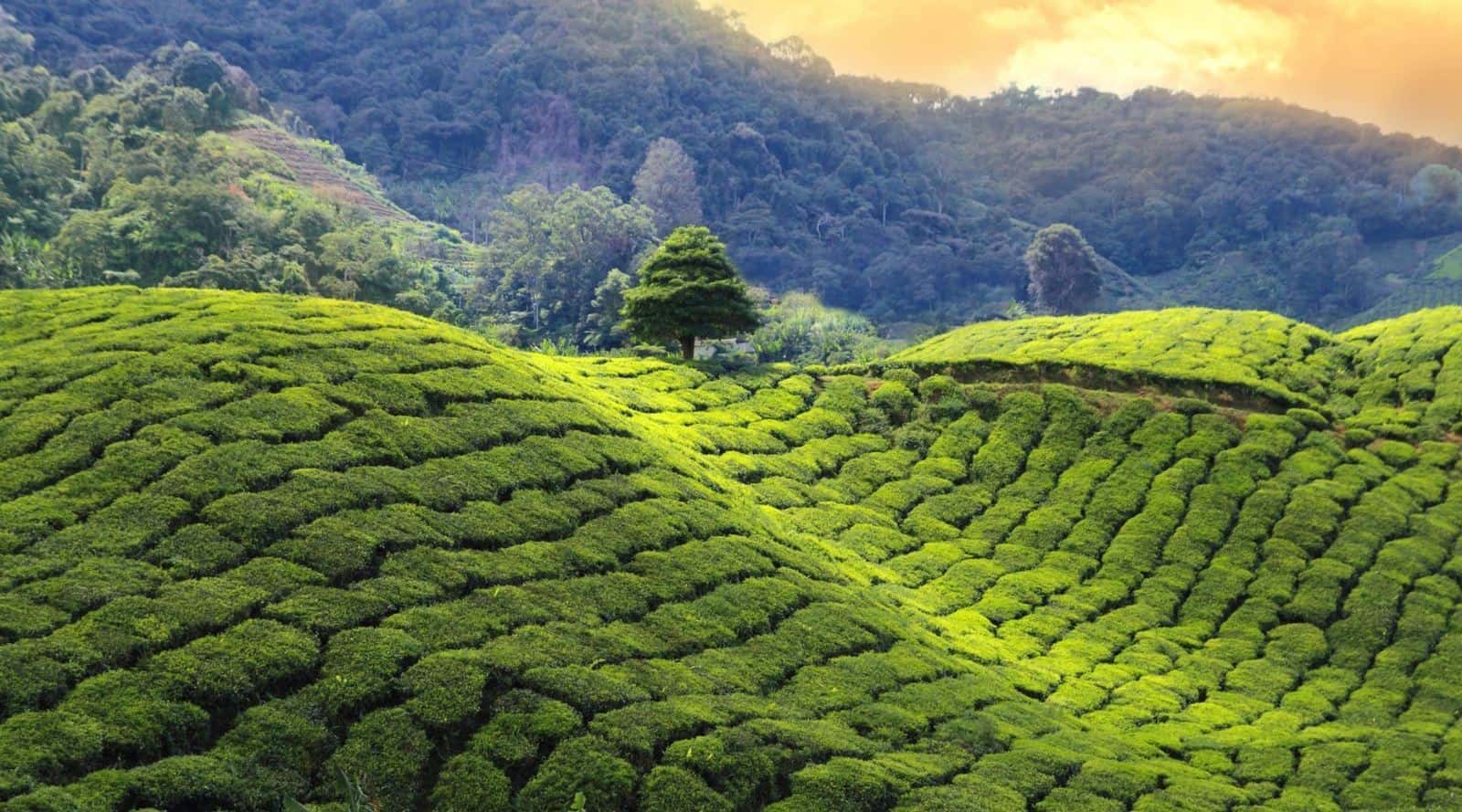Kenya is the largest and most successful tea growing region in Africa. In 2018, the country was ranked fourth in tea production and third for its exportations activities. The first popular Kenyan tea was grown in 1903 in Limuru near Kiambu District. It was cultivated by a European settler called Caine on a two-acre parcel of land.
Tea Production in Kenya
Presently, the same tea plant has grown into large trees which offer a historical heritage of the past, located on the site called Unilever’s Mabroukie Tea Estate. The tea industry in Kenya is divided into two main groups: the small scale tea farms as known as smallholders and the large scale tea plantation division. In Kenya, there are many registered smallholder farms which are located around the tea growing areas of Kenya.
The large multinational tea or commodities firms are responsible for most of the tea grown and exported in Kenya. The four largest companies include James Finlay and Williamson Tea in the United Kingdom. There are some local firms from the eastern part of Kenya that grow tea. Tea is usually grown and produced by these large individual owned tea estates and promoted by the Association of Kenya Tea Growers.
The Kenya Tea Development Authority (KTDA) was established in 1965 to promote and support smallholder tea farmers. The smallholder members of the KTDA grow and process more than 60% of the tea produced in Kenya. (in total 1,398.5 kgs was produced in Kenya as at 2010).
KTDA is responsible for marketing Kenya tea as one brand. With the support of production from smallholder farms, the KTDA is the largest tea producer in the world. Currently, it has over 50 factories which process the leaf from many smallholder farms across the country. Kenya has a favorable tropical climate with tea gardens located at higher elevations, which ranges from 4,900 to more than 8,000 feet.
Related Article: 10 Major Tea Producers. Know Where your Favorite Tea Come From.
Why is Kenyan Tea Different?
With excess sunshine and adequate rainfall within the range of 47 to 106 inches every year, this supply abundant moisture content, together with rich red volcanic soil. Kenyan teas can be grown in excess all through the year without a dormant period.
In addition to every year-round growth, the best tea products are harvested during the part of the year (around January to March) and also in the mid-summer (June and July).
About 90% of the Kenyan teas are cut-tear-curl (CTC) used in tea bag blends. The country is well-known for its CTC production and technology. Kenya uses its know-how to place the nation as one of the world tea market, which includes tea blends of many large and international tea companies.
Related Article: How Tea is Produced? Tea Processing and Production Steps
Most of the tea products manufactured in Kenya are exported as bulk CTC blends, which are mainly used by tea blenders all over the world to add some sweet flavor and promote their brands. A high percentage of tea exported uses common proprietary blends from Scotland, England and Ireland, which has robust and strong teas.
Kenya is planning to create a national brand identity by adding value incentives like Fair Trade as well as organic certifications to attract many consumers across the world and demand higher prices for Kenyan tea in the retail marketplace. Surprising, it rare to find unblended Kenya tea in the United States, but always search for some brand names such as Kangaita, Marinya, Imenti, Mynunga, Rukuriri, Githambo, Keigoi, and Gathuthi.
Due to the increasing demand for orthodox speciality teas around the world, KTDA has started to diversify into orthodox production at the Kangaita Tea Estate. These specially selected clonal tea plants offer the best choice of broad-leafed teas made with special orthodox machinery purchased from India for processing purpose. In some parts of Kenya, tea producers are making different variety of green and white “natural teas” which is grown at a high altitudes without using chemicals such as herbicides or pesticides for weed or pest control. To achieve good quality and receive minimal handling processing, the teas are planted seasonally.
The Different Types of Tea in Kenya
The white teas are naturally dried, and it contains a fine mechanical drying to remove excess moisture. Also, green teas are treated based on natural conditions. They are unoxidized, not pan-fried or steamed, but twisted in a rotor-vane machine while it gets dry.
Kenya Silver back White, Kenya “Natural” Green Tea and Kenya Safari Nandi White are available at every local tea shop or on the internet. If you want high-quality black Kenya tea, you can search for “Milima Golden Flowery Broken Orange Pekoe” which is made from blended leaves from three tea gardens which belong to the James Finlay Tea Company.
Related Article: Top 7 Best Teas From Kenya
In Swahili, “Milima” means high place. It was given the name because the tea varieties are grown on Kenya Highlands above 6,000 feet above sea level. The rocky soil and cool air allow the tea to have both spice and orange flavors. The tea leaves are usually processed at the Marinyn Estate where further processing takes place. The quality of Milima changes every year, at the best moment, it offers warm spice flavors and citrusy orange. If you want to try something new, I recommend you to try this tea product!
Related Article: Teas of Malawi: history, Culture, Types and Production

